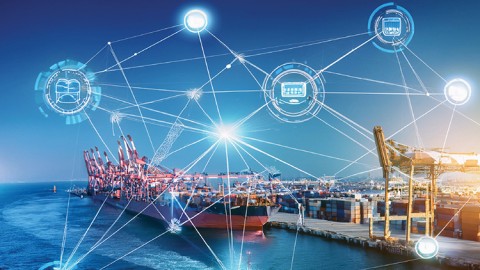To begin with, the year had started with, what seemed like a temporary change in plans, as a result of the Coronavirus (COVID-19) pandemic. In fact, experts had thought that the declining oil prices and excessive storage of oil and gas products were an unpredictable phenomenon. However, it took nearly 6 months after the impact of the global pandemic (Q3 2020) for experts to hypothesize that COVID-19 is here to stay for another couple of years. Not only that, but there is an expected 2nd wave of the COVID-19 pandemic that is expected to hit between Q4 2020 and Q1 2021. The difference between the 2nd wave and the 1st wave of the pandemic is that this time, industry experts are ready for whatever comes their way.
General Overview
It could be said for a fact that the aftermath of the COVID-19 pandemic on the oil and gas industry has been messy. During the early stages of the pandemic, there were two main issues that resulted in the exponentially decreasing oil prices and a reduction in oil demand. The first issue was that there was a battle between Russia and the OPEC regarding cutting production in order to be able to increase oil prices again; as a result, the oil supply was curbed by nearly 20% worldwide. In fact, this was said to be the largest oil curb as it was curbed by nearly 4 times more than that in the 2008 financial crisis. The second issue, being the more obvious one, was that economies were forced to hold all operations due to the COVID-19 pandemic.
Additionally, it was found that the financial state of the market became highly dependent on whether oil prices will drastically change shortly. However, it should be noted that if the price of oil decreases further, this would be an opportunity to re-introduce natural gas and renewable energy sources into the dynamic global energy mix.
Lessons Learned
Despite this, there are some major lessons learned that the oil and gas industry can use to overcome the expected second wave of the pandemic at minimal cost and mitigated negative impacts. For example, some key industry experts found that it was better for companies in the oil and gas industry to work on projects with a high volume of discovery that require low-cost production rates and operations, as well as to also avoid more complex projects that require a higher level of technical input and higher investment costs.
Additionally, another lesson learned is that companies have taken this time to reflect and analyze all their projects and programs in order to determine the relevance as well as their profitability. Also, this gives companies an opportunity to become more selective in the way the products are chosen in the event that there is a consistent low oil price in the long run.
From a Health and Safety (H&S) perspective, companies have taken drastic measures to ensure that the second wave of the pandemic does not negatively or fatally impact their workforce. Over the course of the first wave, the economy had taken a huge hit as employees were laid off in numbers that were larger than those during the financial crisis that happened over a decade ago. An HSE expert, who preferred anonymity, has noted that “the reason that employees were laid off so quickly was that the company was not ready. If a company is more ready for a problem like the coronavirus, then less staff will be laid off and the work will not stop so fast and for long times.”
Now, companies have a better understanding of the virus’ symptoms and have conducted meetings and awareness workshops to better educate their employees on ways to avoid risks of getting sick, ways to remain healthy and sanitized at all times in addition to encouraging one another to not shy away when early symptoms are at bay.
Additionally, companies have to re-introduce the option for employees to work from home, where possible. While it is difficult for field-based employees to work offsite, desk-based employees are now not only asked but encouraged to work from home to mitigate face-to-face engagements. This is where the technology sector has strived over the past few months.
With online communication applications becoming a social norm, employees are now more familiar and have adapted to working more efficiently when offsite. Employees that work on site have been through workshops and awareness sessions to better understand the ways in which health risks could be avoided without compensating the efficiency and effectiveness of their work. The anonymous HSE expert suggested that “we need to make everyone know that the coronavirus is not over yet and that we need to continue to be cautious with our staff and our operations so that things don’t become as bad as they were at the beginning of the year”. These are examples of some of the many lessons learned over the course of the last year.
Case Study
Some oil and gas companies have taken it upon themselves to effectively analyze and assess the COVID-19 pandemic’s effect on their respective companies. In other words, they have found the key lessons learned and are using them throughout the course of the pandemic so that they will be ready in the event of a second wave. For example, Halliburton has developed its very own COVID-19 response based on the World Health Organisation’s (WHO) suggestions. Within their COVID-19 response, they have discussed the health and safety of their employees, supply chain, the business continuity, as well as a tiered crisis response in the event of a second wave.
When discussing their employees, Halliburton has discussed several key points. For example, any employee with suspected COVID-19 symptoms is directed to self-quarantine and stay at home for the safety of the remaining employees. Additionally, a set of precautionary measures have been implemented to ensure social distancing as well as consistent sanitisation of employees as well as their workspace. The company has also suggested that any employees or customers who are not needed on site should work remotely using the communication tools provided.
Furthermore, when discussing their supply chain, Haliburton has ensured that they will continue to work with their suppliers and stakeholders. In order to do so, an assessment has been carried out within each service line to better understand if there are any adverse implications that could result from working so closely with others; in the event of a pandemic related issue that causes difficulty in dealing with their current suppliers or internal stakeholders, then other solutions will be adapted. Additionally, the company has adapted to using air travel for shipping less frequently due to the recent difficulties associated with the availability of air shipping.
Finally, one of the most important features of this is the newly formed tiered crisis response. With this tiered crisis response, the corporate crisis team is able to offer a detailed analysis of the relevant impact on the company in all branches across the world. Also, this team is able to provide more information on any potential consequences that could impact the company in the event of a second wave or potential crisis. Finally, and most importantly, updated precautionary measures on COVID-19 risks are provided to each country based on the respective local plans.
In conclusion, there are various lessons learned that should be seriously considered in the event of a second wave during this pandemic. One of the smartest business moves during this time is for companies to properly analyse and understand the impact that this pandemic had on the business and the ways in which the company can better prepare for any unexpected global concerns.








